List o’ 10 Interesting Independent Discoveries
Independent discovery, also called multiple discovery, is when a discovery or invention is arrived at independently by one person, even though another may have created the same invention in a different place and/or a different time. These are in fact many instances in which similar discoveries and inventions have been made by scientists working independently of each other. Sometimes the discoveries are simultaneous or almost so; sometimes a scientist will make a new discovery which, unknown to him, somebody else has made years before or is about to announce at the same time. One of the most commonly cited examples is the independent formulation of calculus by Newton and Leibniz, which has been definitively documented. Another is the theory of the evolution of the species, independently advanced by Charles Darwin and Alfred Russel Wallace. While there are many to choose from, this post presents ten of the more interesting examples of independent, or multiple, scientific discovery of the modern age.
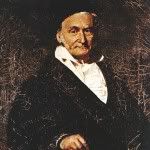

10. Pulmonary Circulation
– Ibn al-Nafis (1242), Michael Servetus (1553),William Harvey (1616)

In 1242 the first description of the function of pulmonary circulation appeared in Egypt, by Ibn al-Nafis, and was later independently rediscovered – twice – by European scientists Michael Servetus (1553) and William Harvey (1616). This discovery of pulmonary circulation has been credited in good faith to the European scientists Servetus and Harvey, as the findings of al-Nafis were unknown at the time. In 1924 a manuscript was found that revealed that this discovery had been made three hundred years earlier, completely unknown to the Europeans. In a classic illustration of independent discovery, Ibn al-Nafis had first correctly described the constitution of the lungs and described the bronchi, the interaction between the body’s vessels for air and blood and described the relationship between the coronary arteries and cardiac muscles in his work in Damascus. The documented work of al-Nafis was discovered by chance by a researcher who was investigating the history of Arab medicine in a library in Germany, 400 years after Harvey and almost 700 years after al-Nafis had published their work. *more*
9. Calculus
– Isaac Newton (1665), Gottfried Wilhelm Leibniz (1674)

It has been documented as a proven fact that the mathematics of calculus, which has been credited to Isaac Newton, was independently discovered by Gottfried Wilhelm Leibniz. Newton is well known for his genius in science and math – the Einstein of his time – while Leibniz is a lesser known personality in the 21st century. Leibniz was a German mathematician, philosopher, and diplomat who, independently of but concurrently with English scientist Isaac Newton, developed the branch of mathematics known as calculus and was one of the founders of symbolic logic. Free from all concepts of space and number, his logic was the prototype of future abstract mathematics, as was the math developed by Newton.
In 1699 the Swiss mathematician and Fellow of the Royal Society, Fatio de Duillier, accused Leibniz of stealing the idea from Newton, a charge which the Royal Society formally upheld in 1711. Leibniz himself never sought to conceal that it was after his 1673 visit to London, by which time Newton had worked out his calculus of fluxions, that he began his investigations into tangents and quadratures, the research that eventually led to his discovery of calculus. Newton’s discovery, probably made in 1665, was not published for many years.
8. Oxygen
– Carl Wilhelm Scheele (Uppsala, 1771), Joseph Priestley (Wiltshire, 1774)
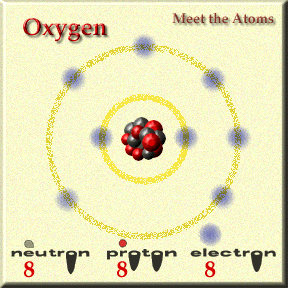
The discovery of Oxygen was discovered independently by Carl Wilhelm Scheele (Uppsala, 1771) and Joseph Priestley (Wiltshire, 1774), while the name was coined by Antoine Lavoisier in 1777. The work by Scheele was not immediately recognized, and the independent discovery by Joseph Priestley was more widely known. Although it had been accepted since the speculations of Aristotle and Galen that air was an element and indivisible, Scheele determined in his experiments that air is composed of two gases in the approximate ratio of three to one. In 1774, Priestly discovered a new gas by heating red mercuric oxide with a ‘burning lens’, and called it ‘de-phlogisticated air’, in accordance with the Phlogiston theory which held at the time. In his experiments he managed to identify eight distinct gases, in contrast with the commonly held view of the time that there was just one ‘air’.
7. Endorphins
– scientists in Scotland and America, 1975

This is a term that most people are familiar with. Endorphins are a relatively recent discovery, which occurred independently in Scotland and America in 1975. The word endorphin is short for “endogenous morphine,” referring to self-made chemicals (endogenous) that have morphine-like effects. In fact, the discovery of endorphins directly emerged from studies of morphine’s influence on the brain. In 1973, Candace Pert and Sol Snyder published findings that morphine avidly attaches to specific proteins (receptors) on brain cells, thereby influencing the brain’s activity, especially in regions allied with mood and pain. Those proteins were dubbed opioid receptors because they bind opiates—morphine and related chemicals from the opium-poppy flower bud (codeine, heroin, oxycodone). Interestingly, Snyder is one of the 10 most-often cited biologists and he also has the highest h-index of any living biologist.
6. Electrical Telegraph/Telephone
– Charles Wheatstone (England) and Samuel F.B. Morse (United States) in 1837; – Alexander G Bell and Elisha Gray
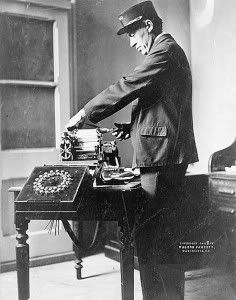
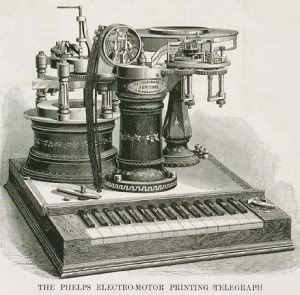
The telegraph is certainly one of the inventions, or developments, in technology that has changed the way people communicate and thus irrevocably changed the world. This first means of mass communication was independently developed by Charles Wheatstone (England) and Samuel F.B. Morse (United States) in 1837. This is somewhat understandable given that each inventor built upon a wealth of knowledge readily accessible to them at the time. As opposed to pure scientific discovery – such as math or a molecule – the electric telegraph arose out of a means to satisfy a need in society, which is typically the great motivator for innovation.
Telephone technology and advancements has a similar history of multiple independent discovery, such as the telephone being invented independently by Alexander G Bell and Elisha Gray. They both filed for patents in the same year, having built their inventions from the same wealth of accumulated knowledge and technology of the times.
5. Bacteriophages (viruses that infect bacteria)
– Frederick Twort (1915) and Félix d’Hérelle (1917)
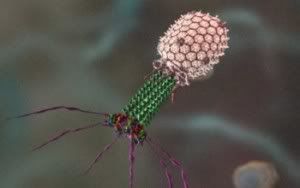
Independent discovery by Frederick Twort (1915) and Félix d’Hérelle (1917) led to the advent of molecular biology. In 1915, Twort discovered what came to be known as bacteriophages. Twort’s discovery was something of an accident. He spent several years using artificial media to grow viruses. Twort noticed that the bacteria infecting his plates kept becoming transparent. This was the earliest recorded proof of bacteriophages, though Twort called his discovery “transmissible lytic agent.”
In 1917, Canadian bacteriologist Felix d’Hérelle made the same discovery, independent of Twort. D’Hérelle gave his findings their now common name, bacteriophages, which translates as bacteria eater. After d’Hérelle announced his findings, there was some controversy over who made the discovery first. The results eventually carried both their names, and became known as the Twort-d’Hérelle phenomenon.
4. Jet Engine
– Hans von Ohain (1939), Secondo Campini (1940) and Frank Whittle (1941)
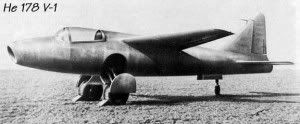
The jet engine was independently invented and used in working aircraft by Hans von Ohain (1939), Secondo Campini (1940) and Frank Whittle (1941). Dr. Hans von Ohain and Sir Frank Whittle are both recognized as being the co-inventors of the jet engine. Each worked separately and knew nothing of the other’s work. Hans von Ohain is considered the designer of the first operational turbojet engine. Frank Whittle was the first to register a patent for the turbojet engine in 1930. Hans von Ohain was granted a patent for his turbojet engine in 1936. However, Hans von Ohain’s jet was the first to fly in 1939. Frank Whittle’s jet first flew in in 1941.
Campini worked with Italian aircraft manufacturer Caproni to develop a jet plane, the Campini Caproni CC.2, which first flew in 1940. The “Thermojet” that Campini developed to propel this aircraft is substantially different from the jet engines of today. Campini’s engine used an ordinary piston engine to compress air which was then mixed with fuel and ignited. Modern jets are based on the turbojet principle, but Campini’s jet was nevertheless a true jet, since it was the reactive force of the burning exhaust gases that pushed the plane along.
3. Polio Vaccine
– Hilary Koprowski (1950), Jonas Salk (1952), Albert Sabin
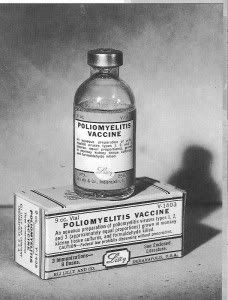
Vaccine developments for polio had begun in the early 1900s. However, early attempts failed, partly because researchers did not know there was more than one virus. We now know that polio is caused by three strains of the virus. To be effective, a vaccine has to confer immunity against all three strains. Ironically, before the 1900s, immunity was acquired primarily during infancy because sanitation conditions were poor and efforts at sewage and water treatment were primitive. Babies were frequently exposed to polioviruses. These infants did not contract the disease because their mothers’ antibodies were passed on to them through breast feeding, allowing the babies to develop their own polio antibodies. Paradoxically, when sanitation improved, infants were no longer exposed at an age when they were protected, so they did not develop antibodies to the viruses, leaving them at risk of contracting the disease as adults.(1957)
Koprowski created a polio vaccine based on oral administration of attenuated polio virus. He focused on live viruses that were attenuated (rendered non-virulent) rather than on killed viruses (the latter became the basis for the injected vaccine that was subsequently created by Jonas Salk). Koprowski viewed the live vaccine as more powerful, since it entered the intestinal tract directly and could provide lifelong immunity, whereas the Salk vaccine required booster shots. Koprowski’s vaccine was taken by the first child on February 27, 1950, and within 10 years was being used on four continents. In 1952, Salk developed a successful vaccine using a mixture of the three types of virus, grown in monkey kidney cultures. In 1957, Albert Bruce Sabin began testing a live, oral form of vaccine in which the infectious part of the virus was inactivated (attenuated). This vaccine became available for use in 1963.
2. Theory of Evolution by Natural Selection
– Charles Darwin (1840), Alfred Russel Wallace (1857-8) — joint publication, 1859
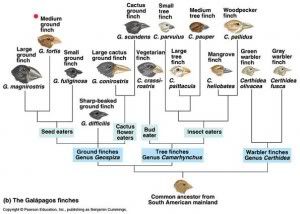
Wallace was in Malaysia in the jungles, collecting insects and specimens of the indigenous life, when he recognized that species change, and that one species can evolve not just into a different species, but into multiple species. In 1855, he published a paper entitled “On the Law Which Has Regulated the Introduction of New Species” in a prestigious periodical, Annals and Magazine of Natural History, explaining the spatial and temporal closeness of similar species. A few years later, Wallace published a follow-up article, “On the Tendency of Varieties to Depart Indefinitely from the Original Type.” Although he didn’t use the term “natural selection,” he argued the same thing, stating in his paper that, “it is evident that, of all the individuals composing the species, those forming the least numerous and most feebly organized variety would suffer first, and, were the pressure severe, must soon become extinct”.
Wallace’s paper and Darwin’s various notes and correspondence on the subject were read at the same Linnaean Society meeting, in London on July 1, 1858. The next year, while Wallace still roughed it in the archipelago, Darwin published On the Origin of Species. Although Wallace independently reached the same conclusion, it is Darwin’s name alone associated with the theory of natural selection.
1. Theory of Relativity
E = mc2 : Henri Poincare, 1900; Olinto De Pretto, 1903; Albert Einstein, 1905; Paul Langevin, 1906
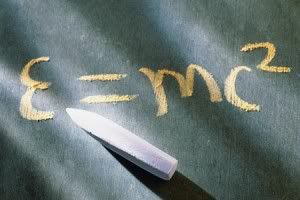
Einstein’s first paper on relativity was published three months after Poincaré’s short paper, but before Poincaré’s longer version. It relied on the principle of relativity to derive the Lorentz transformations and used a similar clock synchronization procedure (Einstein synchronization) that Poincaré (1900) had described, but was remarkable in that it contained no references at all. Poincaré never acknowledged Einstein’s work on Special Relativity. Einstein acknowledged Poincaré in the text of a lecture in 1921 called Geometrie und Erfahrung in connection with non-Euclidean geometry, but not in connection with special relativity. A few years before his death Einstein commented on Poincaré as being one of the pioneers of relativity, saying “Lorentz had already recognized that the transformation named after him is essential for the analysis of Maxwell’s equations, and Poincaré deepened this insight still further.

